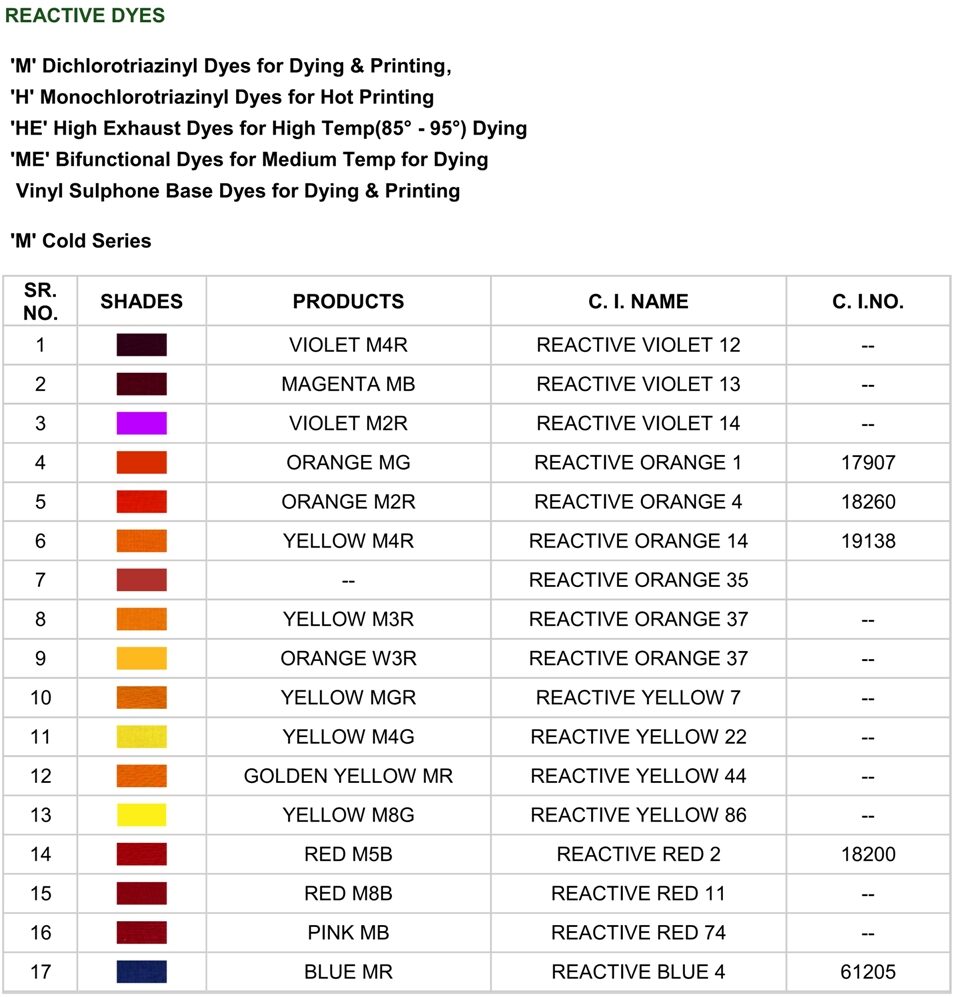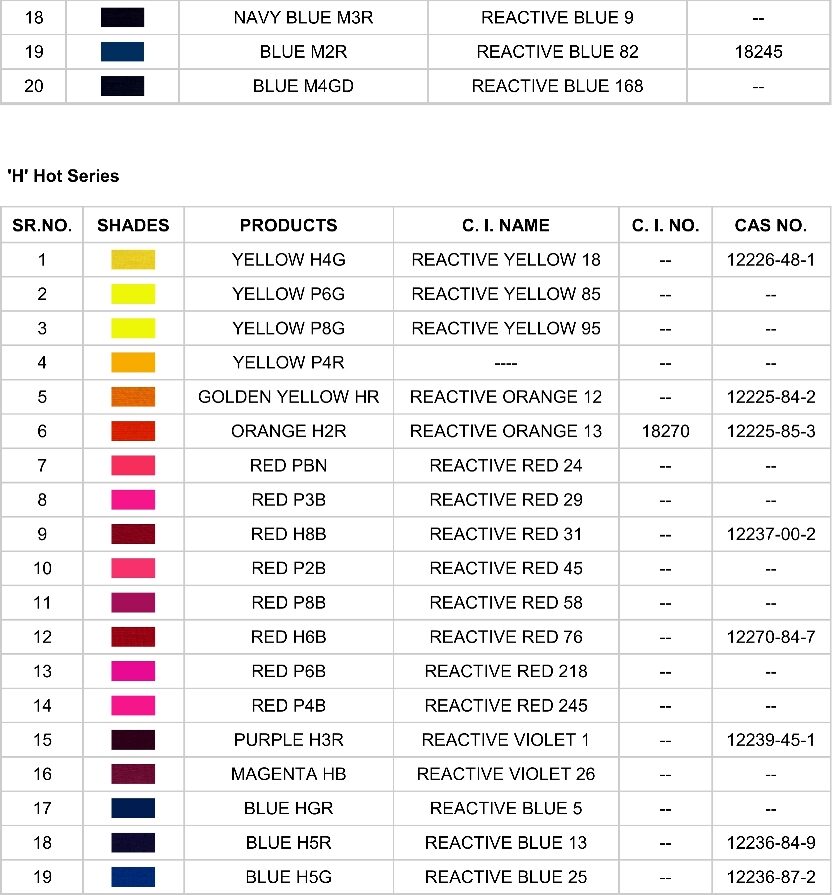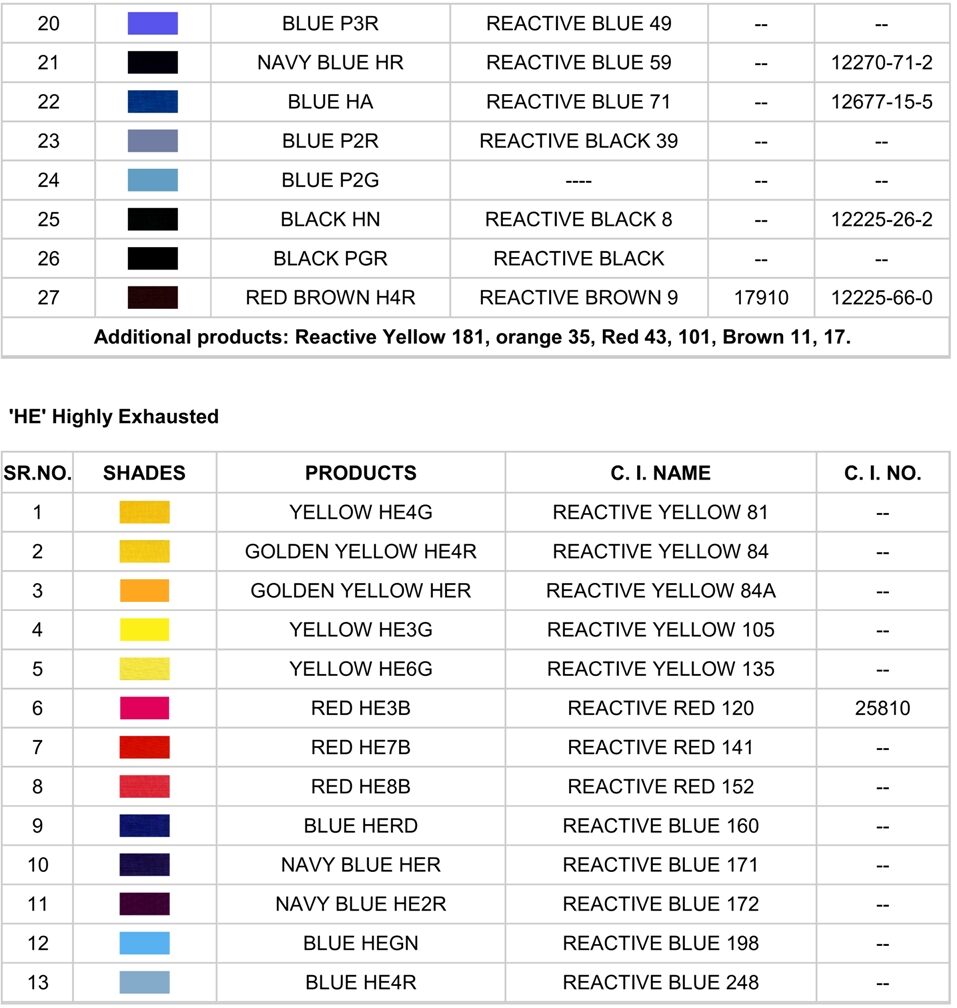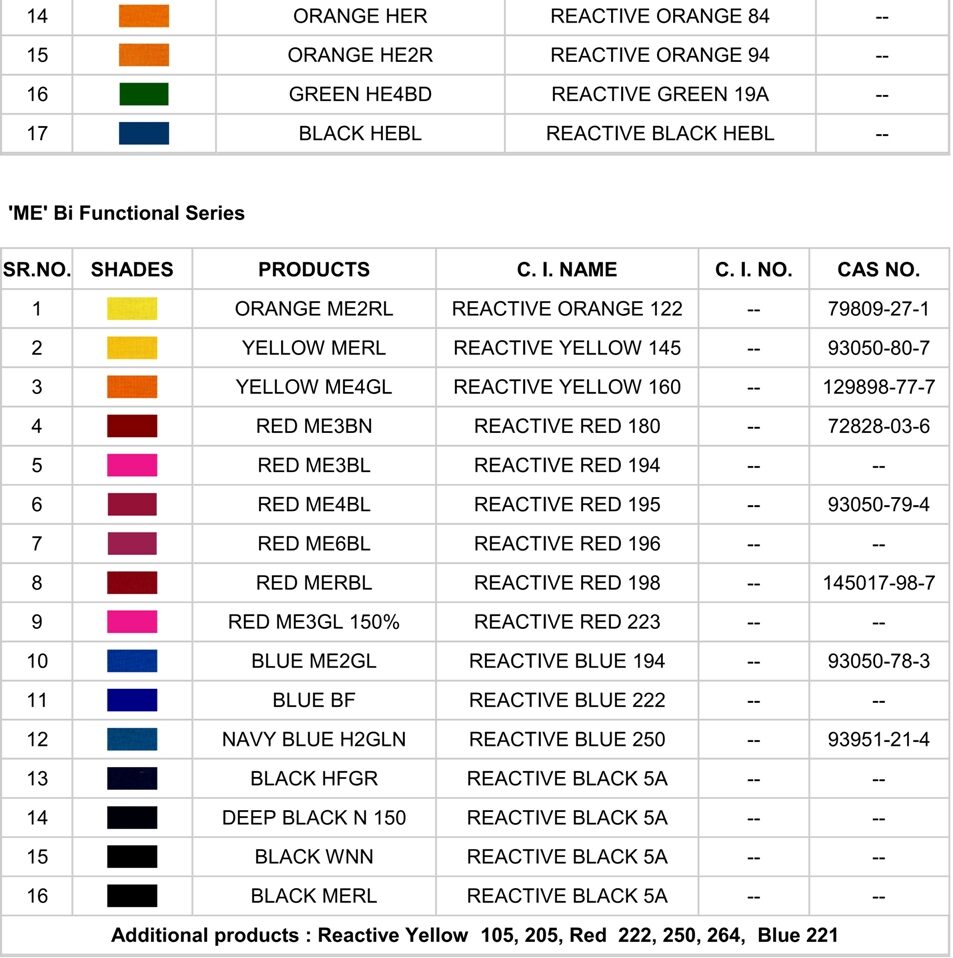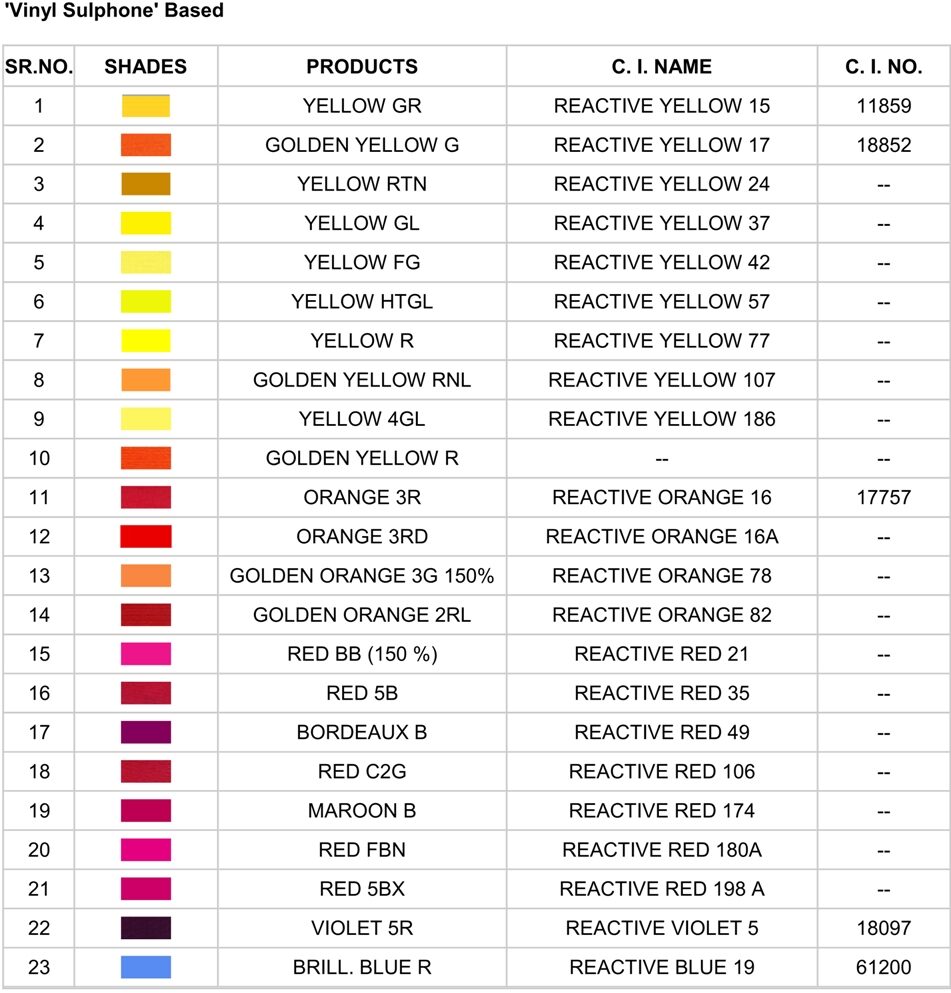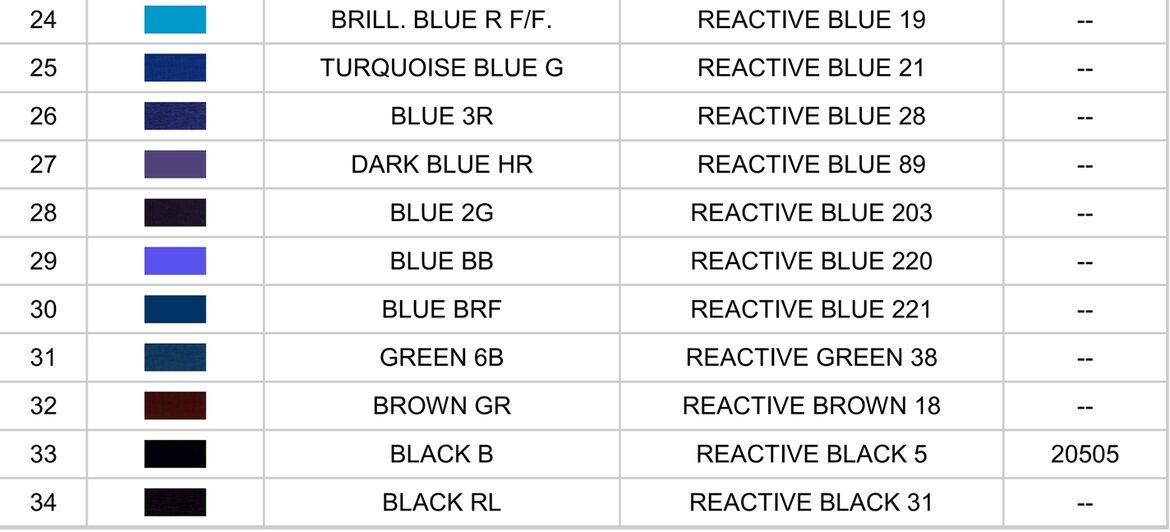Reactive dyes are a class of synthetic dyes primarily used for dyeing cellulosic fibers such as cotton, rayon, and linen. These dyes are called "reactive" because they chemically react with the fibers they are applied to, forming strong covalent bonds between the dye molecules and the fiber molecules. This chemical reaction results in excellent wash and light fastness properties, making reactive dyes highly durable and colorfast.
Key characteristics of reactive dyes include:
-
Chemical Reactivity: Reactive dyes contain functional groups that can chemically react with the hydroxyl groups (-OH) present in cellulose fibers. This reaction forms covalent bonds between the dye molecules and the fiber molecules, resulting in permanent coloration.
-
Vibrant Colors: Reactive dyes are known for their ability to produce vibrant and bright colors with excellent color clarity and depth.
-
High Wash Fastness: The covalent bonds formed between reactive dyes and cellulose fibers make the dye molecules highly resistant to washing, ensuring that the color remains stable even after multiple washes.
-
Compatibility with Cellulosic Fibers: Reactive dyes have a high affinity for cellulosic fibers, allowing them to penetrate deeply into the fiber structure and provide uniform coloration.
The dyeing process with reactive dyes typically involves several steps:
-
Preparation: The fabric is prepared by scouring and washing to remove any impurities and finishes that may interfere with dye uptake.
-
Dyeing: The fabric is immersed in a dye bath containing the reactive dye, along with alkali and other auxiliaries to facilitate the dyeing process. The dye molecules chemically react with the cellulose fibers, forming covalent bonds and imparting color to the fabric.
-
Fixation: After dyeing, the fabric is rinsed to remove any unreacted dye molecules and then treated with a mild acid solution to neutralize the alkali and promote the formation of additional bonds between the dye and the fiber.
-
Washing and Finishing: The dyed fabric is thoroughly washed to remove any remaining dye and processing chemicals. It may then undergo additional finishing treatments to enhance its properties, such as softening or wrinkle resistance.
Reactive dyes are widely used in the textile industry for dyeing a variety of products, including clothing, home textiles, and industrial fabrics. They are also used in digital textile printing due to their compatibility with modern printing technologies. Overall, reactive dyes offer excellent color fastness, durability, and versatility, making them a popular choice for dyeing cellulosic fibers.
